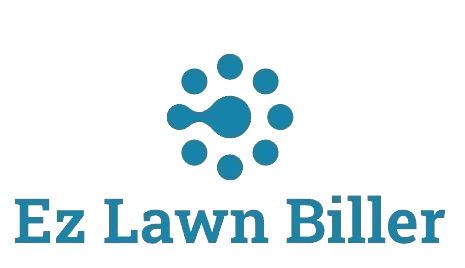Avoid These Common Analyze Performance Mistakes
Analyzing performance is crucial for any business aiming to thrive in today’s competitive landscape. However, many organizations fall into traps that can skew their insights and hinder growth. This blog post will dissect common mistakes in performance analysis, exploring their implications and offering strategies to overcome them. Whether you’re a small lawn care business or a larger operation, understanding these pitfalls can lead to better decision-making and improved outcomes.
Performance analysis is the process of evaluating how well a business or specific strategy is doing. It’s rooted in gathering data, interpreting results, and making informed choices based on those interpretations. For lawn care businesses, optimizing every aspect of performance—from service delivery to billing accuracy—can significantly impact customer satisfaction and revenue. Yet, many companies overlook fundamental principles that can lead to flawed analyses.
In this article, we will cover the most common performance analysis mistakes, including data misinterpretation, lack of clear objectives, ignoring qualitative factors, and failing to adapt based on findings. By addressing these issues, businesses can enhance their analytical processes, leading to more effective strategies and successful outcomes.
Data Misinterpretation: The Foundation of Flawed Analysis
The first step in performance analysis is often the most critical: data collection. However, many businesses fail to interpret this data correctly. Misinterpretation can arise from a lack of understanding of statistical concepts, leading to decisions based on inaccurate conclusions.
For example, a lawn care company might analyze customer feedback scores but overlook the context of the data. A sudden drop in scores could indicate a temporary issue, while a consistent pattern could suggest deeper problems with service quality. Without the right interpretation, the company may implement misguided strategies that fail to address the root cause, ultimately leading to customer dissatisfaction.
To avoid this mistake, businesses should invest in training for their teams on data analysis and interpretation. Utilizing tools like EZ Lawn Biller can aid in presenting data clearly, making it easier to derive meaningful insights. Regularly reviewing data in team meetings also fosters collaboration and ensures diverse perspectives in interpreting results.
Lack of Clear Objectives: Wandering Without Direction
Another common mistake in performance analysis is proceeding without clear objectives. When businesses engage in analysis without defined goals, they risk collecting irrelevant data, leading to wasted resources and confusion.
For instance, a lawn service company may collect an extensive amount of data on various performance metrics without knowing which ones matter most. As a result, they might spend time analyzing metrics like time spent per job when their actual priority should be client retention rates. Without these priorities, the analysis can be directionless and ineffective.
To combat this, organizations should establish clear, measurable objectives before embarking on performance analysis. This could involve identifying key performance indicators (KPIs) that directly align with overall business goals. Regularly revisiting these objectives can also help ensure that the analysis remains relevant and focused.
Ignoring Qualitative Factors: The Human Element
Data analysis often emphasizes quantitative metrics, but ignoring qualitative factors can lead to a skewed understanding of performance. In the lawn care industry, customer satisfaction and employee morale are crucial components that can impact overall success.
For example, a company might have high revenue but low employee satisfaction. While the numbers are strong on paper, the underlying issues could lead to high turnover rates, negatively affecting service quality and customer experience. This demonstrates that focusing solely on quantitative data can obscure critical insights.
To achieve a balanced analysis, businesses should incorporate qualitative data into their performance reviews. Conducting regular employee surveys and gathering customer feedback through platforms like a lawn service app can provide invaluable insights. This holistic approach can help companies understand the full picture of their performance and address any underlying issues effectively.
Failure to Adapt: Stagnation in a Dynamic Environment
Once analysis is complete, the next step is implementation. However, many businesses fail to adapt their strategies based on analytical insights. This stagnation can lead to missed opportunities for improvement and growth.
Consider a lawn care business that identifies a need for more efficient scheduling based on performance data but continues with outdated practices. This lack of responsiveness can result in lost revenue and frustrated customers who expect timely service.
To avoid this pitfall, organizations must foster a culture of adaptability. Regularly reviewing performance data and being willing to change course based on findings is vital for sustained success. Tools like EZ Lawn Biller can help by automating processes and making it easier to implement changes based on analysis.
Overlooking the Competitive Landscape: Not All Metrics Are Internal
Another mistake businesses often make in performance analysis is focusing solely on internal metrics. While understanding one’s own data is essential, overlooking the competitive landscape can result in missed opportunities and threats.
A lawn service company might excel in its regional market, but if it fails to analyze competitor offerings, pricing, and customer satisfaction, it could fall behind. Keeping an eye on competitors allows businesses to benchmark their performance and innovate based on market trends.
Incorporating competitive analysis into performance evaluations can provide insights that drive strategic decisions. Organizations should regularly assess competitors’ strengths and weaknesses to determine their own positioning and potential areas for improvement.
Neglecting Ongoing Training and Development: An Investment in Future Success
Lastly, failing to invest in ongoing training and development can significantly hinder effective performance analysis. As tools and methodologies evolve, businesses must ensure that their teams are equipped with the latest skills and knowledge.
In the lawn care industry, adopting software solutions like a lawn billing software can lead to more efficient operations. However, if employees are not adequately trained on these tools, the potential benefits may not be realized. This can lead to inefficiencies and errors in the analysis process.
To overcome this challenge, companies should prioritize employee training and development as part of their performance strategy. Offering workshops, online courses, or access to industry resources can empower teams to utilize tools effectively and stay updated on best practices.
Embracing Technology: A Game Changer for Performance Analysis
As we navigate the pitfalls of performance analysis, it’s essential to embrace technology. Utilizing modern tools can streamline data collection and analysis, making it easier to avoid common mistakes. For lawn care businesses, software such as EZ Lawn Biller can simplify the billing process and provide insights into service performance.
By automating mundane tasks, businesses can focus on data interpretation rather than data entry. This shift allows for more robust analysis and informed decision-making. Additionally, cloud-based solutions offer real-time data access, enabling teams to respond quickly to trends or changes in performance.
As the lawn care industry evolves, leveraging technology will become increasingly important. Companies that invest wisely in software solutions will not only enhance their operational efficiency but also improve their competitive edge in the market.
Leveraging Data for Strategic Growth
The ultimate goal of performance analysis is to support strategic growth. By avoiding common mistakes and embracing data-driven decision-making, businesses can navigate challenges more effectively. This proactive approach enables organizations to adapt to market changes and meet customer needs efficiently.
For instance, a lawn service company that regularly analyzes client feedback and adjusts its offerings accordingly can improve retention rates and foster long-term relationships. This strategic mindset transforms data from mere numbers into actionable insights that drive success.
Furthermore, sharing performance insights with the entire team can cultivate a culture of accountability and continuous improvement. When employees understand how their performance impacts the organization’s overall success, they are more likely to engage proactively in achieving business goals.
Conclusion
In conclusion, avoiding common performance analysis mistakes is essential for any business seeking to thrive in today’s dynamic environment. By addressing data misinterpretation, setting clear objectives, considering qualitative factors, adapting strategies, and investing in training, organizations can enhance their performance analysis processes significantly.
Additionally, embracing technology, such as lawn service software, paves the way for more efficient data management and analysis. These practices not only lead to improved strategic decisions but also foster a culture of growth and adaptability within organizations.
As you reflect on your performance analysis practices, consider implementing these strategies to avoid common pitfalls. Start leveraging the power of data to drive your business forward and ensure long-term success. Don’t miss out on the opportunity to explore tools like [Lawn Biller Software](https://ezlawnbiller.com/) to help streamline your processes and improve your performance evaluations.




